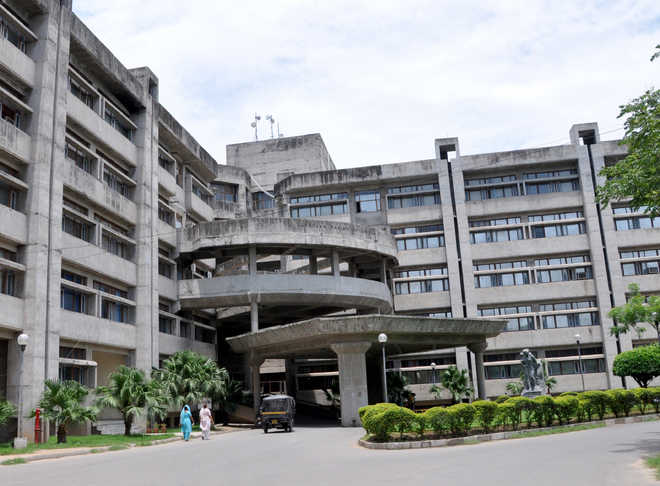Mukul Bansal
Given the large number of patients who visit the Post Graduate Institute of Medical Education and Research (PGIMER) in the city daily from all over north India and other states as well, it’s axiomatic that such a behemoth cannot run purely on its material resources. “From 1967 onwards, the PGI became an institute of national eminence. The Government of India said the rules and laws of AIIMS will be applicable to the PGI. That changed the destiny of the institute,” says Dr NN Wig, psychiatrist and Professor Emeritus, PGI, Chandigarh.
The PGI, Chandigarh, was established in 1962. According to Dr IC Pathak, paediatrician and a former director, PGI, the three founders of the PGI— Dr Tulsi Das, Dr Santokh Singh Anand and Dr PN Chuttani — all from Amritsar Medical College, suggested to the Government of India to set up the PGI. Sardar Partap Singh Kairon, the then Chief Minister of Punjab, was the initiator. He went to Jawaharlal Nehru about setting up the institute and Nehru agreed.
“When the PGI, Chandigarh, was founded, private practice was allowed only in Rohtak, Amritsar and Patiala. Its three founders — Dr Tulsi Das, Dr Santokh Singh Anand and Dr PN Chuttani, all from Amritsar Medical College — sacrificed their private practice in Amritsar to come to the PGI. The purpose behind doing so was that private practice left no time to teach or devote attention to patient care and research,” says Dr Pathak.
According to Dr Wig, the institute is still an “oasis of excellence” as compared to the current mess in Punjab and Haryana. It’s not like private hospitals which are service providers. It’s well known for the hard work its doctors put in. The work starts at 8 am. Dr Chuttani used to come half an hour earlier.
Every Wednesday, a clinico pathological conference takes place in departments on dot.
“The main aim behind establishing the PGI was teaching and research. It’s not patient care,” says Dr Wig, adding that the “general public wants that the best doctors of the country should treat them for free, an impossible dream.” The cleanliness maintained at the PGI is well known from the time of Dr Chuttani. Many people remember Dr Chuttani’s tenure (1970-1980) as the golden period of the institute, says Dr Wig.
According to Dr Pathak, the institute was started by its founders because in India, there was a great need for postgraduate teachers. Postgraduate training was available at a few places in India other than Bombay, Madras and Calcutta. “We needed an institute that could produce postgraduate teachers and where the research quality and patient care should be the best in the country,” he says.
The PGI was established mainly because no such care or treatment is available in the region. The facilities are inadequate. “Tertiary services are not available even in Chandigarh except for the PGI,” says Dr Pathak. Patients come from all over India — the maximum numbers are from Himachal Pradesh, Uttarakhand and Rajasthan. There are medical colleges in all states. That number doesn’t make the PGI what it is, says Dr Pathak. “Our institution is one of the best as far as integrity, dedication and compassion towards the patients is concerned,” sums up Dr Pathak. PGI admits students from all over India on merit and teachers as well. The founding fathers said the PGI doctors should work with the basic objectives of the institution in mind: Discipline, punctuality, dedication to profession and patients. There is no precedent for PGI doctors’ hard work. They even work for 24 hours.
Talking about the succeeding generations of PGI doctors, Dr BK Sharma, a general physician and former director, PGI, says, “We hope this will continue — their behaviour, dedication, teaching, research, welfare of the community, idealism and ambition to improve the profession.”
Talking of ethics, he adds, “Discipline is ingrained in them — to go to the clinic on time, not to miss the class, etc.” When the PGI started in 1962, within two to three years, PG courses started. Doctorates and speciality-oriented PG courses started in almost all the subjects.
Dr Wig regrets the “misuse” of the PGI by VIPs who treat it as a primary health care centre. “The red beacon is not there, but that culture still prevails,” he says, adding, “Use it for the purpose for which it is meant.
Unlock Exclusive Insights with The Tribune Premium
Take your experience further with Premium access.
Thought-provoking Opinions, Expert Analysis, In-depth Insights and other Member Only Benefits
Already a Member? Sign In Now











